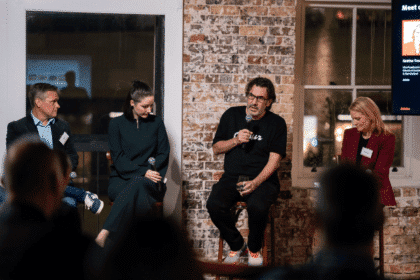Media agency Carat has unveiled its latest whitepaper on sustainability for media and the finding that Australians are constantly confronted by the seriousness of sustainability.
The link to the full report can be found here.
News of wild weather, from floods to bushfires to drought, is inescapable. Climate change policy has been a feature of every recent election. World leaders meet at conferences like COP26, and students march every year the School Strike for Climate. The warming planet is no longer a distant issue, but a very present threat, and not one that people – or brands – can ignore any more.
As a result, marketers and agencies are talking about sustainability more than ever before. For some, these conversations have been going for decades. For others it’s very new. In many categories sustainability is becoming a hygiene factor for doing business, and it’s on the radar of every stakeholder from the customer to c-suite.
In the interest of brevity however, the report narrows the focus to a specific aspect of sustainability: the natural environment, and people’s impact upon it. It explores what sustainability means to different people. There are people who really care about sustainability. People who care. People who are neutral. And people who don’t care.
Danni Wright, Chief Strategy Officer, Carat Australia said: “Today the onus is for brands to go beyond minimising any negative impact on people and planet, and into driving sustainable outcomes that leave the world a better place.
Whilst this won’t be a defining driver of choice for every consumer, for 66% of the population its emphasis weighs heavily.
As this weight continues to increase, in our latest ‘People in View series’ we have focused on understanding these consumers as people to provide direction on the way in which media can be used to best connect with them about sustainability.”
People Who Really Care About Sustainability
This cohort accounts for approximately 23% of the total Australian population.
They know sustainability best, are the most educated about it, it’s more top-of mind, and they are more likely to notice and remember campaigns about sustainability and to influence others. They are also most sceptical of brands who are talking about sustainability, making them a difficult cohort for the average brand to win over. Instead, they are typically a target for brands where sustainability is the brand’s DNA, like Patagonia.
Brands that can confidently meet this cohort’s expectations should strongly consider targeting them, as they influence the conversation on sustainability and are most likely to advocate for your brand.
People Who Care
This cohort accounts for approximately 43% of the total Australian population.
This is the biggest cohort, and the safest target for most sustainability campaigns. They won’t necessarily be actively looking for brands that are campaigning about sustainability, but they will respond well to brands that do get their attention.
Brands who are starting to speak about sustainability for the first time should target this audience first to start building positive brand perceptions.
People Who Are Neutral
This cohort accounts for approximately 23% of the total Australian population.
This is a challenging cohort to win because sustainability is not on their radar. Not only do brands need to get their attention, but they also need to convince this cohort that sustainability is important – no mean feat, given that sustainability has featured prominently in the public consciousness for decades now. This cohort have already had lots of opportunities to realise its importance.
Nevertheless, this cohort is best for brands who have already won over the ‘People Who Care’ cohort and are looking to create a broader impact.
People Who Don’t Care
This cohort accounts for approximately 11% of the total Australian population.
You would be hard-pressed to find a campaign that specifically targets this cohort. It only accounts for a small segment, and they are very unlikely to respond in any meaningful way to communications about sustainability.
They should be reserved as a target audience brands who are especially ambitious when it comes to driving sustainable behaviour change
Principles For Marketers
We have translated our people insights into actionable principles for marketers. Each principle is accompanied by case studies from brands around the world that are executing each principle best. What this whitepaper suggests is that the principles which underpin sustainable marketing are very similar to those that underpin best practice for traditional marketing.
These principles include a carefully selected audience; simple messaging; an easy user experience; a distinctive approach; relevant media; and media that reflects the message it carries. However, there are nuances specific to sustainability that are demonstrated well in the case studies that follow.
1) Carefully select your target audience:
Arla wanted to influence ‘People Who Are Neutral’ about sustainability, so it created an AR game (‘Recycling Buddies’) on the pack of its Luonto+ yoghurt for kids, based on the insight that Finnish children were often the ones to prompt their household to recycle more (Source: dentsu).
Patagonia launched a new range of sustainable food, including tinned fish, snacks, dried meats, honey, and alcohol. It created a printed journal and detailed website, both featuring trusted personalities, to reach People Who Really Care About Sustainability. The brand also appeals to this audience with its boycott of paid Facebook advertising, because (as per a press release) the platform continues to spread “misinformation about climate change”
2) Simplify your sustainable message with media:
Carlsberg made a special glue to connect cans of beer, reducing packaging by 76%. It communicated this with an education campaign in video and digital channels to demonstrate how the packs work.
IKEA announced a plant-based version of their famous Swedish meatballs, with an exhaustive content campaign in owned and earned media, featuring recipe inspiration and behind-the-scenes storytelling.
3) Make it easy for people to take sustainable action:
Lacoste included pre-paid postage labels in its eCommerce deliveries, so shoppers could donate their old clothes in the same box, for free.
Heineken created a green energy program that made it easy for their B2B customers in Brazil (bars and restaurants) to switch to renewable energy. The venues could join the program on the Heineken website and reduce their energy bills by up to 40%.
4) Focus on one distinctive aspect of sustainability:
Carrefour created the ‘Black Supermarket’ to protest EU laws which restricted the types of seeds that could be used to grow produce – laws that protected the agro-chemical industry at the cost of farmers, biodiversity and food quality. Carrefour began selling illegal produce in many of its stores, ran advertising, organised a petition, and successfully lobbied to change the law.
Corona has become famous for its campaigns about ocean pollution, including sculptures made of plastic waste, its ‘Pay with Plastic’ campaign, and an app that enables users to calculate their own plastic footprint.
5) Make sustainability relevant:
German Rail launched a social media campaign that compared local German tourist destinations with popular overseas ones. The ads showed how much less it would cost (in CO2 and in Euros) to travel by train to the local destination, with real-time data based on the viewer’s location.
Cervejaria Colorado (a Brazilian brewer) launched a new beer that changed price every week in accordance with Brazil’s deforestation rates: the healthier the rainforest, the cheaper the beer. The live mechanism was promoted in digital media, and profits were donated to local community and conservation groups.
6) Remember that the medium is the message:
JOLT is an Australian company that owns electric vehicle charging stations with digital advertising screens. Brands like Telstra have used these screens to reach sustainably-minded audiences when they run messaging about sustainability, and traditional campaigns too.
Volkswagen used pollution-eating paint on murals to launch its new electric vehicle, the ‘ID 3’.
Dole (a fruit and vegetable company) ran ads on rubbish trucks and bin bags featuring facts about food waste and food poverty in New York and other American cities. These ads were supported by paid digital and social content that explained Dole’s own waste-prevention promises.
Polestar Electric Cars used minimal ink in their full-page newspapers ads to express their ‘Maximal Experience, Minimal Impact’ proposition. Ads feature a QR code for readers to discover more.
Dentsu and Bristol University have created a web-based tool called ‘DIMPACT’ that calculates greenhouse gas emissions caused by digital media, from the point content production to the end user’s device. It is being trialled and scaled in 2022 for advertisers who want to offset the impact of their media investment.
The Guardian has banned fossil fuel advertising, excludes fossil fuels from its investment portfolio, and has pledged to reduce its emissions to net zero by 2030. It regularly publishes content about the climate crisis “with expertise and urgency”, positioning itself as a relevant context for brands with the same values.








